Hardscaping is an essential element of outdoor design, offering a way to create beautiful, functional spaces with durable materials like stone, concrete, and wood. Unlike landscaping, which focuses on greenery and plants, hardscaping emphasizes non-living features such as patios, pathways, and retaining walls. This ultimate guide will walk you through everything you need to know about hardscaping, from choosing the right materials to planning and executing your project. Whether you’re looking to enhance your backyard with a cozy seating area or add a touch of elegance with a stone pathway, hardscaping can transform your outdoor space into a personal oasis.
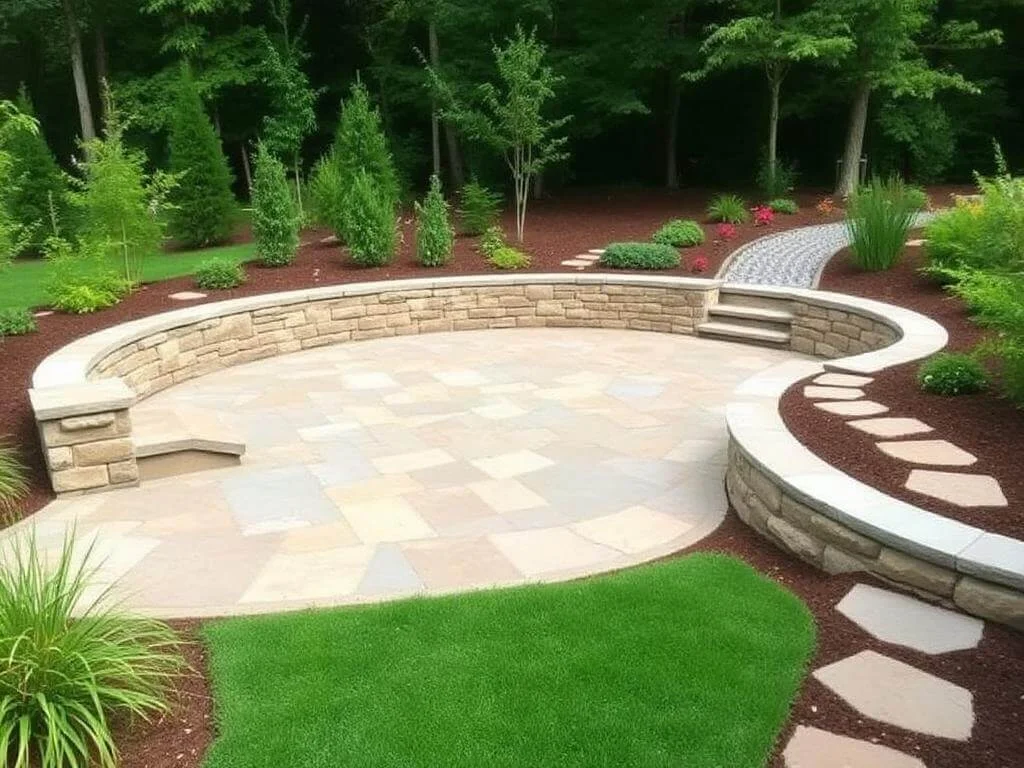
a. What Is Hardscaping and Why Does It Matter?
Hardscaping refers to the use of non-living materials in outdoor design to create functional, durable, and visually appealing features. While landscaping focuses on plants, trees, and soft elements, hardscaping encompasses everything from patios and pathways to retaining walls and fire pits. These elements form the foundation of any outdoor space, providing structure and usability.
One of the key reasons hardscaping matters is its ability to transform your yard into a space that’s not only beautiful but also practical. For instance, a well-designed patio made of natural stone or concrete pavers offers a perfect area for entertaining guests, while a gravel pathway can guide visitors through a lush garden. Beyond aesthetics, hardscaping also improves the functionality of outdoor areas by addressing issues like drainage, erosion, and uneven terrain.
Another significant benefit of hardscaping is its low maintenance. Unlike plants, which require regular care, features like stone walls, wooden decks, or water fountains can remain in excellent condition with minimal upkeep. This makes hardscaping an ideal choice for homeowners who want an elegant outdoor space without the constant work.
By integrating hardscaping into your outdoor design, you can strike a balance between natural beauty and modern convenience, creating a space that suits your lifestyle while boosting curb appeal and property value.
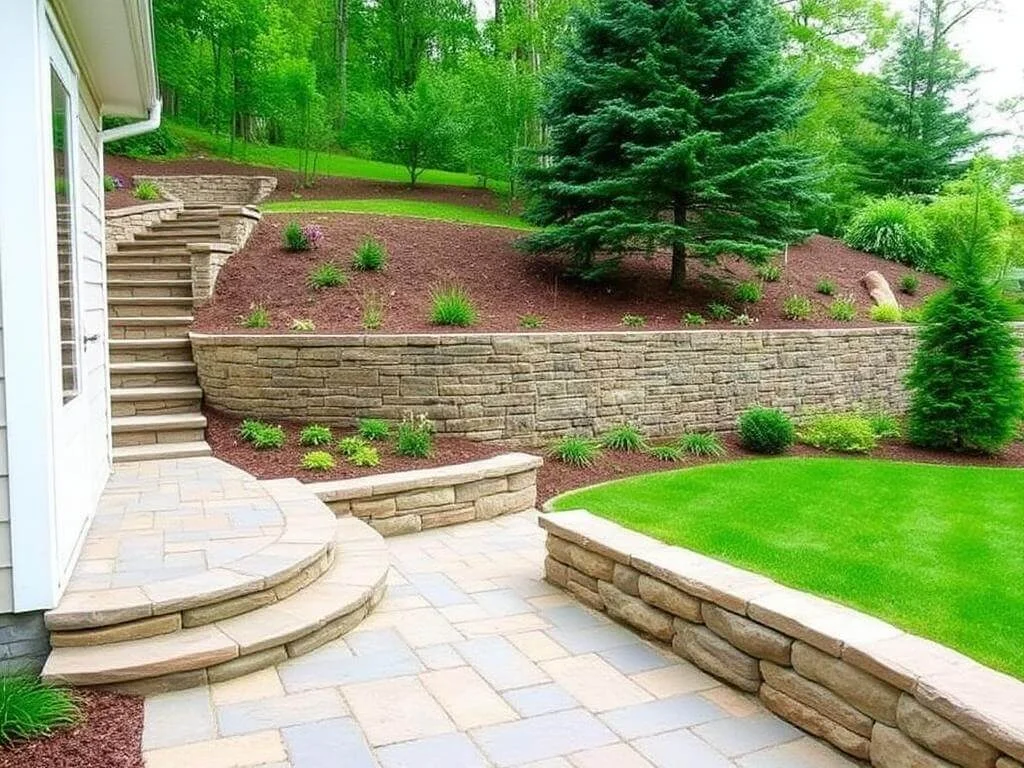
b. Popular Hardscaping Materials and Their Uses
Choosing the right materials is a cornerstone of any successful hardscaping project. Each material brings its own unique aesthetic, durability, and functionality, making it essential to match the material to your specific outdoor design goals. Below, we explore some of the most popular hardscaping materials and their versatile uses.
1. Natural Stone
Natural stone is a timeless choice in hardscaping, valued for its beauty and durability. Materials like granite, slate, and limestone are commonly used for patios, pathways, and retaining walls. The natural textures and colors of stone blend seamlessly into any outdoor setting, adding elegance and charm. Natural stone is also weather-resistant, making it ideal for long-term outdoor use.
2. Concrete Pavers
Concrete pavers are a versatile and cost-effective option for creating walkways, driveways, and patios. Available in a variety of shapes, colors, and patterns, they offer endless design possibilities. Concrete pavers are not only durable but also easy to repair, as individual pieces can be replaced without disrupting the entire structure.
3. Gravel
Gravel is a budget-friendly material often used for pathways, garden borders, and drainage solutions. Its natural appearance complements both modern and rustic designs. Gravel is easy to install and maintain, making it an excellent choice for DIY hardscaping projects. When paired with stepping stones, it creates a cohesive and stylish look for outdoor areas.
4. Wood and Composite Materials
Wood and composite materials are ideal for hardscaping features like decks, pergolas, and fences. Natural wood offers a warm, rustic aesthetic, while composite materials provide a low-maintenance alternative that resists weathering and pests. These materials are perfect for creating outdoor living spaces that feel inviting and comfortable.
5. Brick
Brick is a classic hardscaping material known for its durability and charm. It’s commonly used for walkways, patios, and garden borders, adding a touch of tradition to outdoor spaces. Brick is highly versatile and can be arranged in various patterns, such as herringbone or basket weave, to enhance visual interest.
By selecting the right hardscaping materials, you can create an outdoor space that combines beauty, functionality, and durability. Consider the climate, maintenance requirements, and overall design aesthetic when choosing materials to ensure your project stands the test of time.
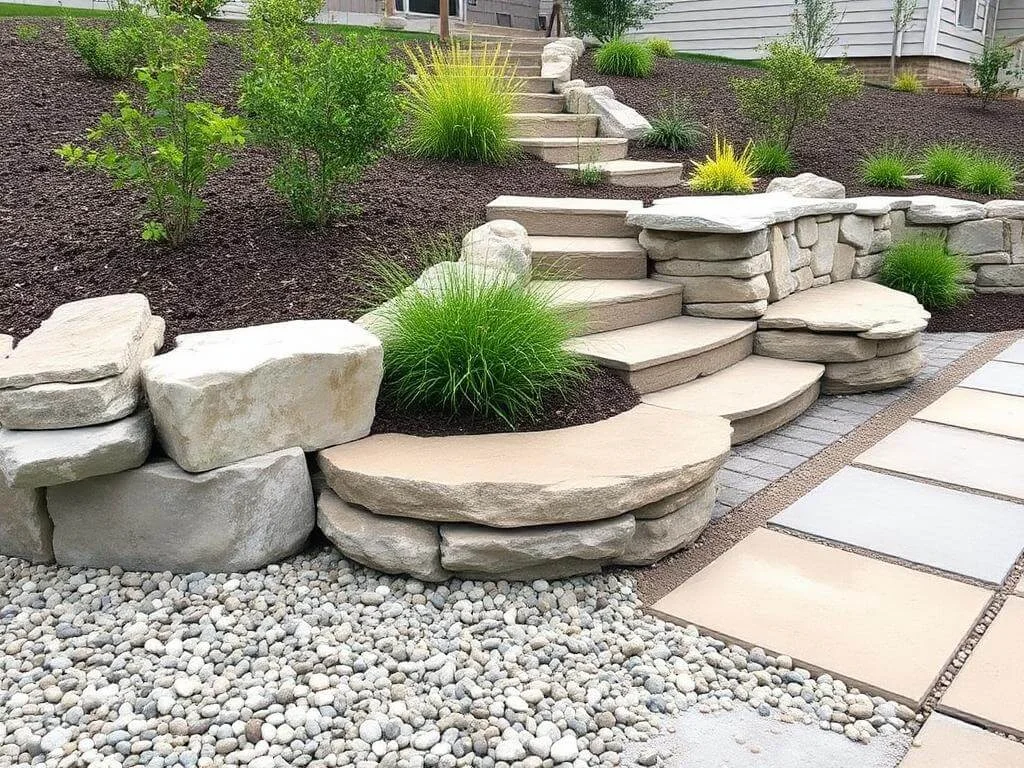
c. Hardscaping Ideas to Transform Your Outdoor Space
Hardscaping is an excellent way to elevate the functionality and visual appeal of your outdoor area. Whether you have a small backyard or a sprawling garden, there are countless ways to incorporate hardscaping elements that suit your style and needs. Here are some inspiring ideas to transform your outdoor space:
1. Create a Cozy Patio with Seating and a Fire Pit
A well-designed patio is a cornerstone of outdoor living. Use materials like natural stone, concrete pavers, or brick to construct a durable and attractive patio surface. Enhance the space with comfortable seating, such as weather-resistant furniture or built-in benches. Adding a fire pit at the center not only provides warmth but also creates a focal point for gatherings and relaxation.
2. Add Pathways and Garden Edging for Structure
Pathways guide visitors through your garden while adding a sense of structure to your outdoor space. Use gravel, stepping stones, or concrete pavers to create paths that blend seamlessly with the natural surroundings. Complement the look with garden edging made of stone or brick to define flower beds, prevent soil erosion, and give your yard a polished appearance.
3. Design an Outdoor Kitchen for Entertaining
Take your outdoor entertaining to the next level with a fully equipped outdoor kitchen. Incorporate durable materials like stone or concrete countertops, stainless steel appliances, and brick or stone enclosures for grills. Include features like a bar area, sink, and storage cabinets to make the space functional and inviting. An outdoor kitchen is a perfect addition for those who love hosting parties or family dinners under the open sky.
4. Incorporate Water Features for Serenity
Water features are a popular hardscaping element that can add tranquility and elegance to your yard. Options include fountains, waterfalls, or small ponds surrounded by stonework. These features not only enhance the aesthetics but also create a soothing ambiance with the gentle sound of flowing water.
5. Build Retaining Walls with Style
The retaining walls are both functional and decorative. They help manage sloped areas, prevent soil erosion, and create visually appealing tiers in your yard. Use materials like natural stone or concrete blocks to build walls that complement the overall design of your outdoor space. Retaining walls can also double as seating areas when designed with wide, flat tops.
By incorporating these hardscaping ideas into your outdoor design, you can create a space that is not only beautiful but also practical. Remember to balance the hardscape elements with landscaping features like plants and greenery for a harmonious and inviting environment.
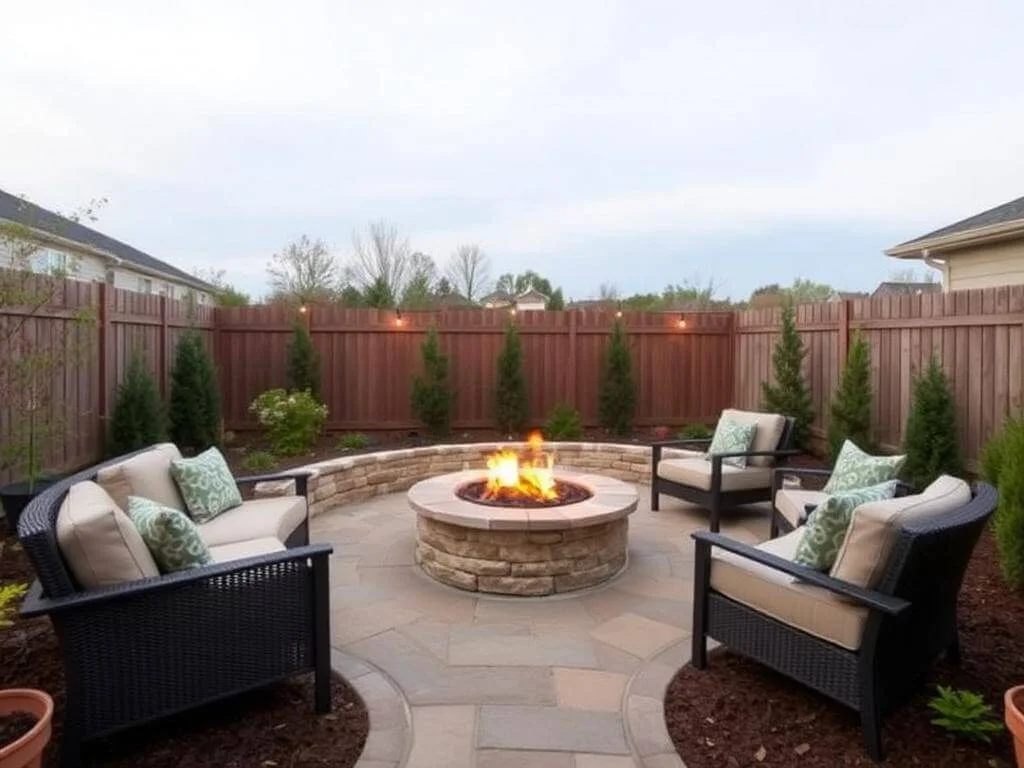
d. How to Plan and Execute a Hardscaping Project
A successful hardscaping project requires careful planning and thoughtful execution. Whether you’re creating a simple pathway or designing a full outdoor living area, following these steps will help you achieve a functional and visually appealing result.
1. Assess Your Outdoor Space and Identify Needs
Start by evaluating your outdoor area. Consider the size, layout, and natural features of the space. Identify specific needs or goals for your hardscaping project—whether it’s adding a patio for entertaining, building a retaining wall for erosion control, or creating a pathway to connect different areas. Take note of any challenges, such as uneven terrain or drainage issues, that may influence your design.
2. Establish a Budget and Gather Materials
Setting a clear budget is essential for any hardscaping project. Research the costs of materials like stone, concrete pavers, gravel, or wood, and factor in additional expenses for tools, labor, and maintenance. If you’re working with a professional contractor, request quotes to compare pricing. Choosing quality materials that fit your budget will ensure a durable and long-lasting outcome.
3. Plan the Design and Layout
Once you’ve identified your needs and budget, focus on the design. Sketch out a layout that integrates hardscaping features with the natural flow of your outdoor space. For example, position patios near entrances for convenience or place pathways to guide movement through the yard. Incorporate elements like seating areas, fire pits, or water features in ways that enhance functionality and aesthetics. Use tools like design software or consult a professional to refine your plan.
4. Prepare the Site and Address Drainage
Proper site preparation is crucial for hardscaping. Clear the area of vegetation, debris, and obstacles. Level the ground and compact the soil to create a stable base for your hardscape features. Consider drainage solutions such as installing French drains, creating slopes, or using permeable materials to prevent water pooling and protect your hardscaping elements.
5. Execute the Project or Hire Professionals
If you’re tackling a DIY hardscaping project, follow the design plan closely and take your time with installation. Lay pavers evenly, secure retaining walls with proper reinforcement, and seal materials where necessary to enhance durability. For larger or more complex projects, hiring experienced professionals can save time and ensure high-quality results.
6. Add Finishing Touches and Maintain the Space
After the hardscaping features are in place, focus on the finishing touches. Add landscaping elements like plants or mulch to soften the look and create a cohesive design. Regular maintenance, such as cleaning pavers, sealing surfaces, and inspecting for wear and tear, will keep your hardscaping looking its best for years to come.
By carefully planning and executing your hardscaping project, you can create a stunning outdoor space that is both functional and inviting. A thoughtful approach will ensure the results align with your vision and stand the test of time.
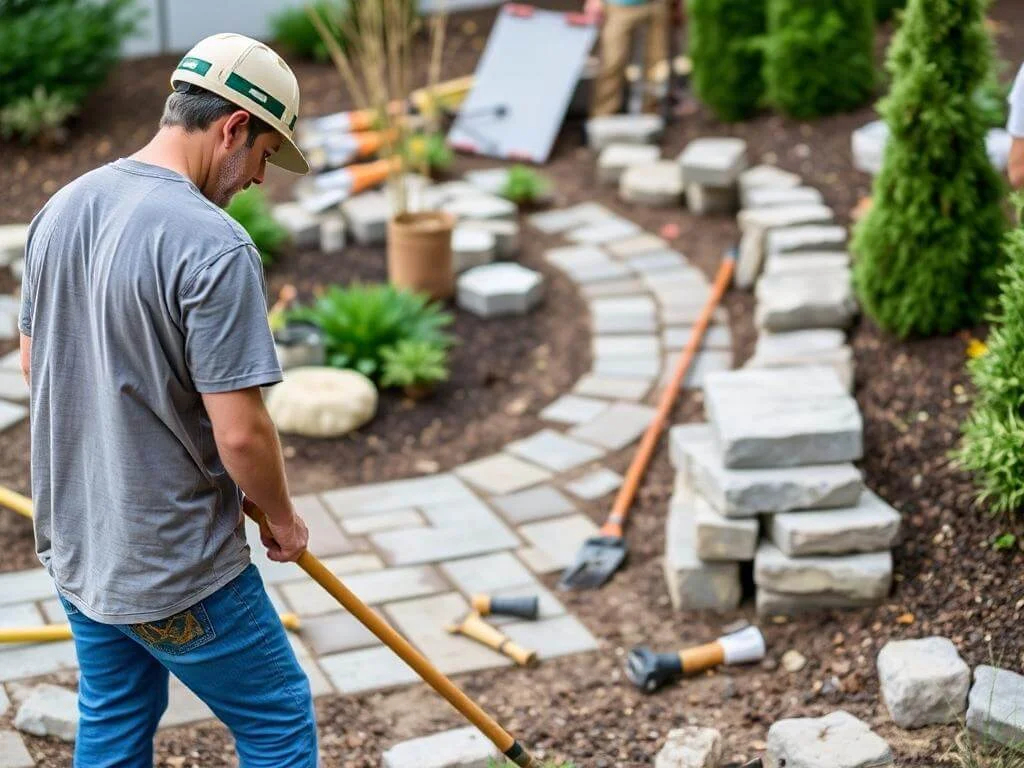
e. Hardscaping Maintenance and Tips for Longevity
Hardscaping is known for its durability, but like any part of your home, it requires regular maintenance to remain in top condition. Proper care ensures that your hardscaping features not only look great but also last for years without the need for costly repairs or replacements. Here are some essential maintenance tips to preserve the beauty and functionality of your hardscaped areas.
1. Clean Regularly to Remove Dirt and Debris
Outdoor hardscaping surfaces like patios, pathways, and retaining walls can accumulate dirt, leaves, and debris over time. Use a broom or leaf blower to remove surface debris regularly. For deeper cleaning, wash hardscape features with a hose or pressure washer to eliminate grime, stains, and algae. Avoid harsh chemicals that could damage materials like natural stone or pavers.
2. Seal and Protect Hardscape Surfaces
Sealing is a vital step in maintaining materials like concrete, natural stone, and brick. Applying a high-quality sealant protects surfaces from moisture, stains, and UV damage. Reseal surfaces every few years, depending on the type of material and level of exposure to the elements. This not only enhances the appearance of your hardscaping but also extends its lifespan.
3. Inspect for Damage and Repair Promptly
Regularly inspect your hardscaping for cracks, loose pavers, or signs of wear. Addressing minor issues early can prevent them from becoming major problems. For example, replace damaged pavers, fill cracks in concrete, and tighten loose fixtures in wooden elements like pergolas or decks. Routine maintenance keeps your hardscaping safe and functional.
4. Manage Drainage to Prevent Water Damage
Proper drainage is crucial for the longevity of hardscaping. Ensure that water flows away from structures like patios and retaining walls to avoid pooling and erosion. Clean out gutters and drainage systems to prevent blockages. If necessary, add features like French drains or permeable pavers to improve water management and protect your hardscape.
5. Prepare for Seasonal Changes
Seasonal weather can impact your hardscaping. In colder climates, freeze-thaw cycles can cause materials to crack. Protect your hardscaping by removing snow promptly and using sand or gravel instead of de-icing salts, which can damage surfaces. In warmer regions, provide shade for wooden elements to prevent warping or fading caused by intense sunlight.
6. Adopt Sustainable Practices for Eco-Friendly Maintenance
Sustainability is becoming increasingly important in hardscaping. Use eco-friendly cleaning products and recycle materials during repairs or renovations. Consider integrating permeable pavers or rainwater harvesting systems into your hardscape to reduce your environmental footprint while maintaining functionality.
By following these maintenance tips, you can preserve the beauty and functionality of your hardscaping features for years to come. A little effort goes a long way in protecting your investment and keeping your outdoor space inviting and enjoyable.
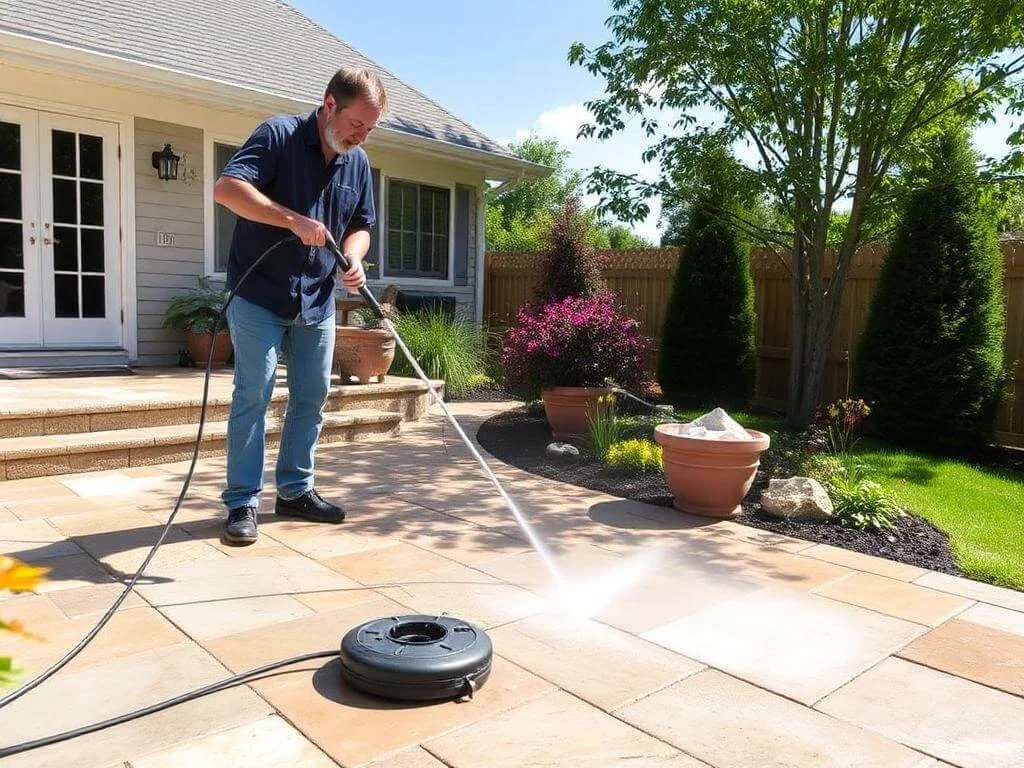
Conclusion
Hardscaping is a transformative element of outdoor design that combines durability, functionality, and beauty. From defining spaces with patios and pathways to enhancing aesthetics with retaining walls and water features, hardscaping offers endless possibilities to elevate your yard. By understanding the key materials, exploring creative design ideas, and following proper planning and maintenance practices, you can create an outdoor space that suits your style and meets your needs.
Remember, the success of any hardscaping project lies in balancing the hardscape elements with natural landscaping to create a harmonious and inviting environment. Whether you’re a DIY enthusiast or working with professionals, investing in hardscaping will add value to your property and provide a space for relaxation, entertainment, and enjoyment for years to come.
Ready to start your hardscaping journey? Explore these ideas, tips, and inspiration to bring your outdoor vision to life today!
